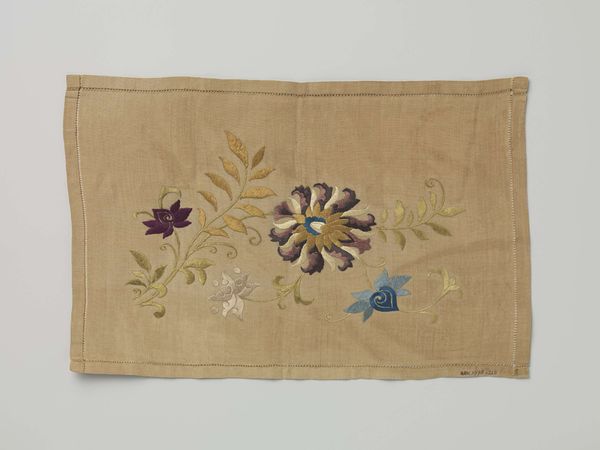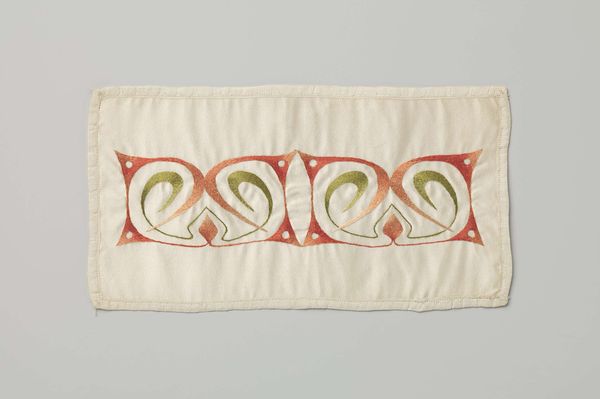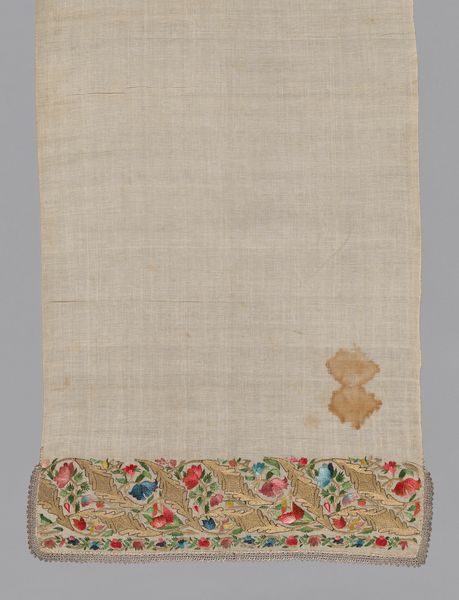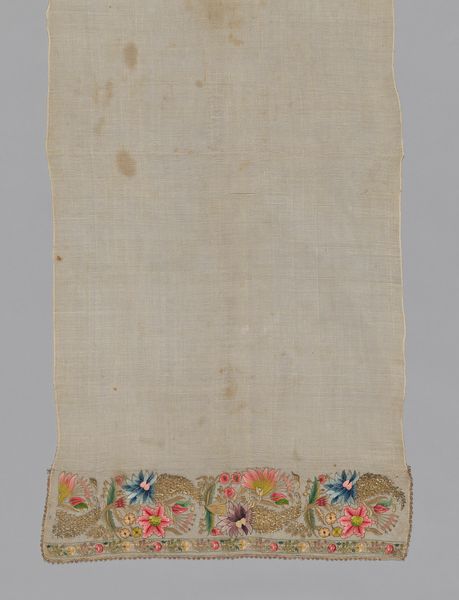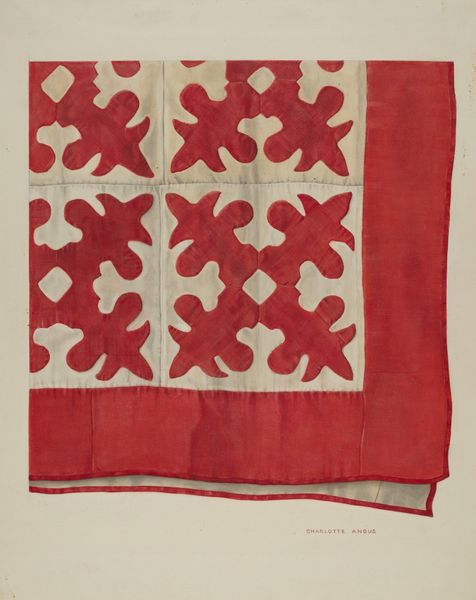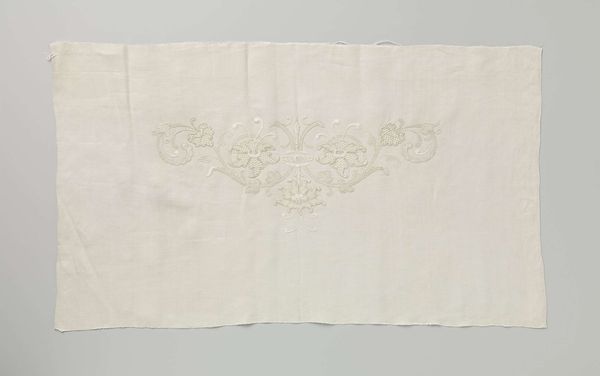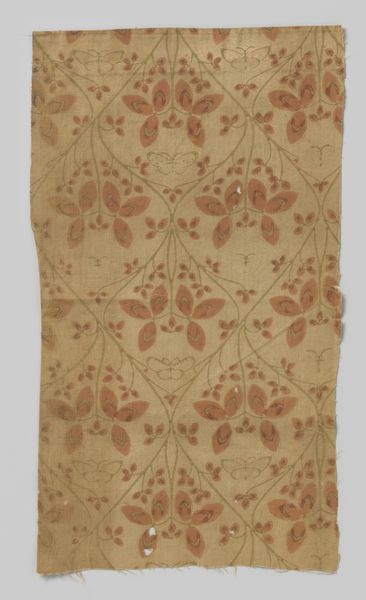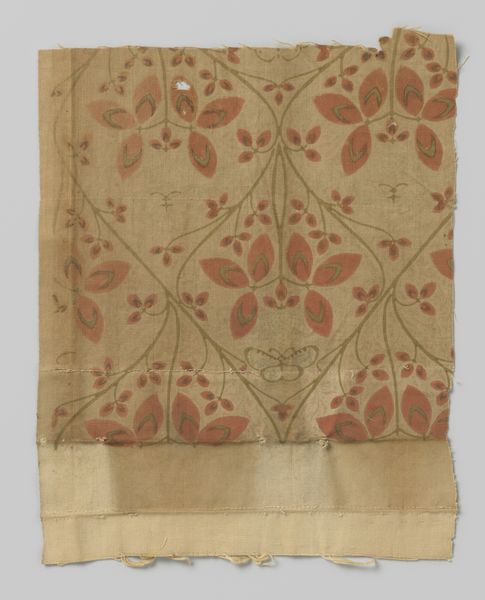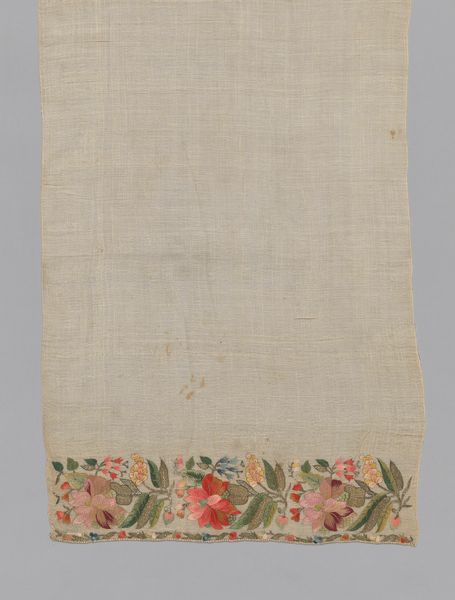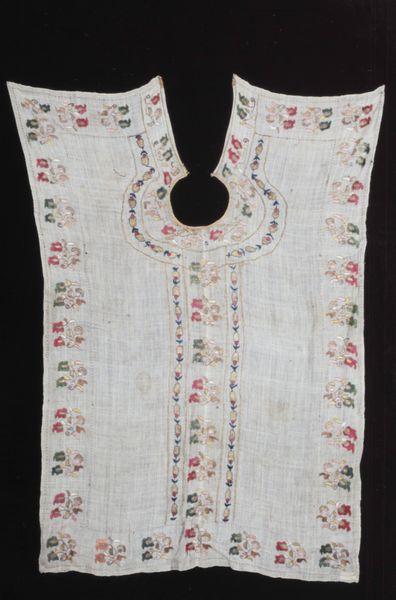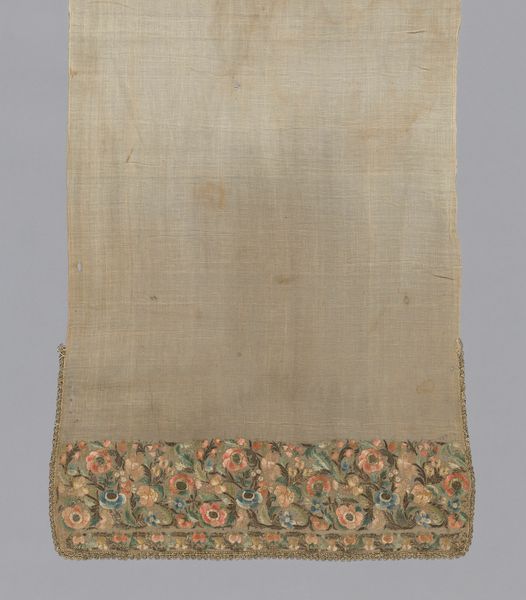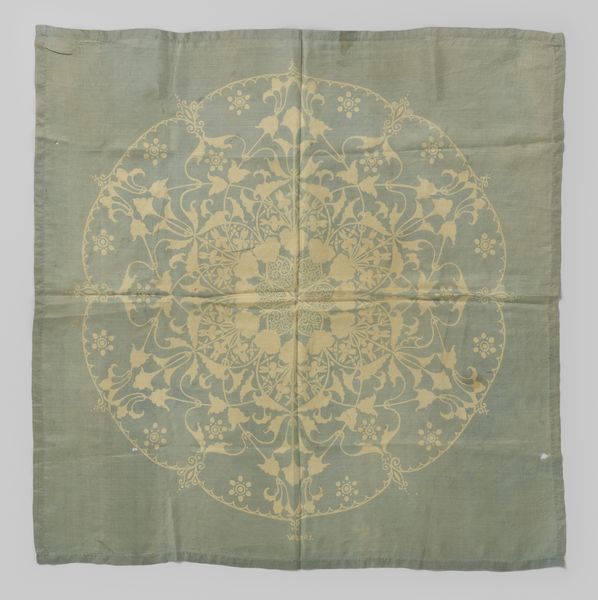
fibre-art, silk, textile
#
fibre-art
#
art-nouveau
#
silk
#
textile
#
clothing promotion photography
#
fashion and textile design
#
hand-embroidered
#
pattern background
#
fabric design
#
pattern repetition
#
textile design
#
decorative-art
#
imprinted textile
#
layered pattern
#
clothing design
Dimensions: height 33 cm, width 23 cm
Copyright: Rijks Museum: Open Domain
Editor: This is "Handwerk met geborduurde waterlelies," or Handwork with Embroidered Water Lilies, by Aagje Tiket, around 1900. It's a textile piece featuring water lilies. The stitching feels intentionally delicate. What do you make of this work? Curator: I'm immediately drawn to the tension between domesticity and artistic expression. We're looking at embroidery, historically gendered as "women's work," but here it becomes a deliberate act of creation. How does this piece challenge traditional hierarchies of art and craft? Editor: I hadn’t thought about the gendered aspect. It’s interesting how something functional becomes art just by being in a museum. Does the Art Nouveau style amplify that tension? Curator: Absolutely. Art Nouveau, with its organic forms and embrace of decorative arts, provided a space for women artists to explore their creativity outside the rigid confines of academic painting. Think about the social expectations of women at the turn of the century and how textile work offered a subversive outlet. What can this tell us about how gender shapes our understanding of art and labour? Editor: So, is the choice of water lilies significant too? Is it just pretty decoration? Curator: On the surface it might seem decorative, but consider the symbolism: water lilies are associated with transformation and resilience. Perhaps Tiket used this motif to subtly communicate a message of female strength and autonomy within a restrictive society. Do you think that is a reach? Editor: I think it brings another layer to the piece, seeing it as a quiet act of rebellion. Curator: Exactly. By examining the social context, we see this embroidery as more than just a pretty pattern. It is an important document that tells the history of resistance against the system that has tried to erase and undervalue craft made by women. Editor: I’ll definitely look at textile art differently from now on! Thank you for your perspective! Curator: My pleasure!
Comments
No comments
Be the first to comment and join the conversation on the ultimate creative platform.
